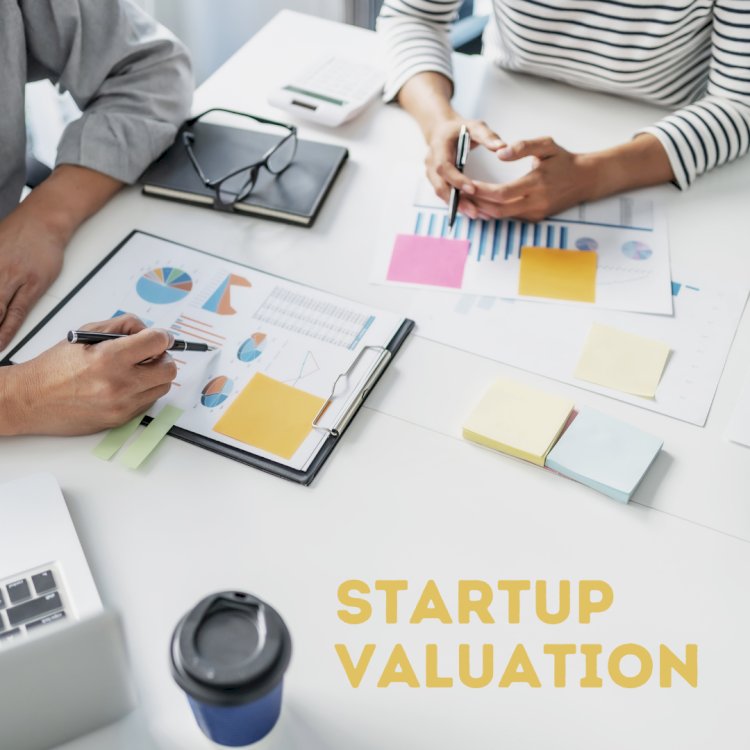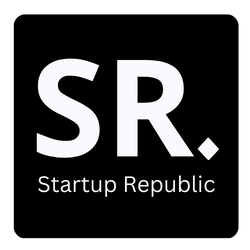How To Do A Startup Valuation Using 8 Different Methods.
Learn about 8 common methods used to value a startup, including Berkus Method, Comparable Company Analysis, Discounted Cash Flow, and more. Understand how to assess the worth of early-stage and growth-stage startups for investors and founders.

Startup valuation is the process of determining how much a startup is worth. It helps founders, investors, and stakeholders understand the financial value of the business. Since startups often don’t have stable revenue or profits, their valuation is based on factors like market potential, team strength, innovation, and future growth prospects.
Think of it like pricing a house before selling it. The value depends on location, condition, demand, and future potential. Similarly, a startup’s valuation depends on its market, competition, growth opportunities, and risks.
It’s important because:
- Investors decide how much to invest and what stake they get.
- Founders understand how much their company is worth.
- It helps in mergers, acquisitions, and future financial planning.
In this blog, we'll explore 8 common startup valuation methods, their formulas, and how they work.
- Berkus Method
The Berkus Method is used to value early-stage startups, particularly those that are pre-revenue. This method focuses on assessing different qualitative factors, such as the strength of the business idea, the team, and the product.
Formula:
Startup Valuation=Business Idea+Prototype/Technology+Team+Product/Market Fit+Sales or Traction.
Example: For a startup like Airbnb in its early stage, its valuation might be calculated by adding up the scores for each of the factors mentioned above. If each factor is worth $500K to $1M, the total valuation could range from $2M to $5M.
- Comparable Company Analysis (CCA)
Comparable Company Analysis (CCA) is a valuation method that compares the startup with similar companies in the same industry, focusing on revenue multiples or market cap. This method is used for growth or mature stage startups.
Formula:
Valuation=Revenue×P/S Ratio (Price-to-Sales)\text{Valuation} = \text{Revenue} \times \text{P/S Ratio (Price-to-Sales)}
Example: If a startup like Airbnb generates $50M in annual revenue, and companies like Booking.com have a P/S ratio of 5x, the startup's valuation would be:
Valuation=50M×5=250M\text{Valuation} = 50M \times 5 = 250MValuation=50M×5=250M
This gives an estimated valuation range of $100M to $500M, depending on the market.
- Discounted Cash Flow (DCF)
The Discounted Cash Flow (DCF) method is widely used for more established startups that have predictable cash flows. It projects the company's future cash flows and discounts them to their present value using a discount rate.
Formula:
DCF=Cash Flow(1+Discount Rate)n\text{DCF} = \frac{\text{Cash Flow}}{(1 + \text{Discount Rate})^n}DCF=(1+Discount Rate)nCash Flow
Where:
- Cash Flow is the estimated future earnings.
- Discount Rate is the rate at which future cash flows are discounted.
- n is the number of years in the future.
Example: Suppose Airbnb is projected to have $500M in revenue in 5 years with a 30% profit margin and a 10% discount rate:
DCF=150M(1+0.10)5=93.04M\text{DCF} = \frac{150M}{(1 + 0.10)^5} = 93.04MDCF=(1+0.10)5150M=93.04M
Using this method, Airbnb's valuation could range from $500M to $2B depending on growth rates and projections.
- Risk Factor Summation Method
The Risk Factor Summation method assigns a base valuation to a startup and then adjusts it based on the identified risk factors such as market risk, competition, and technology risk. It’s commonly used for early-stage startups.
Formula:
Valuation=Base Valuation+∑(Risk Factors)\text{Valuation} = \text{Base Valuation} + \sum (\text{Risk Factors})Valuation=Base Valuation+∑(Risk Factors)
Example: For a startup like Airbnb, if the base valuation is $2M and the identified risk factors add up to $500K (for risks like market competition, regulatory issues, etc.), the final valuation might be $2.5M to $4M.
- Venture Capital Method
The Venture Capital (VC) Method is typically used by investors to estimate the value of a startup at the seed or early stages. It projects the company’s exit value and works backward to estimate the pre-money valuation, assuming the investor will need a certain return.
Formula:
Pre-Money Valuation=Exit ValueInvestor’s Return Multiple\text{Pre-Money Valuation} = \frac{\text{Exit Value}}{\text{Investor’s Return Multiple}}Pre-Money Valuation=Investor’s Return MultipleExit Value
Example: If a startup like Airbnb is projected to have an exit value of $1B in 5 years, and investors expect a 10x return:
Pre-Money Valuation=1B10=100M\text{Pre-Money Valuation} = \frac{1B}{10} = 100MPre-Money Valuation=101B=100M
This method would give Airbnb a valuation between $50M and $150M, depending on investor confidence and risk appetite.
- Scorecard Valuation Method
The Scorecard Method evaluates a startup based on several factors like the quality of the team, product, market opportunity, and competition. It’s ideal for seed-stage startups.
Formula:
Adjusted Valuation=Base Valuation×(Team Score+Market Score+Product Score+Competition Score)\text{Adjusted Valuation} = \text{Base Valuation} \times (\text{Team Score} + \text{Market Score} + \text{Product Score} + \text{Competition Score})Adjusted Valuation=Base Valuation×(Team Score+Market Score+Product Score+Competition Score)
Example: For Airbnb, let’s assume:
- Base valuation = $2M
- Team Score = 80% (due to experienced founders)
- Market Opportunity = 90% (huge global market)
- Product Score = 70% (innovative but competitive)
- Competition Score = 60% (moderate competition)
The adjusted valuation would be:
Adjusted Valuation=2M×(0.4×0.8+0.3×0.9+0.2×0.7+0.1×0.6)=2M×0.78=1.56M\text{Adjusted Valuation} = 2M \times (0.4 \times 0.8 + 0.3 \times 0.9 + 0.2 \times 0.7 + 0.1 \times 0.6) = 2M \times 0.78 = 1.56MAdjusted Valuation=2M×(0.4×0.8+0.3×0.9+0.2×0.7+0.1×0.6)=2M×0.78=1.56M
Thus, the valuation might range from $1.5M to $3M.
- Cost-to-Duplicate Method
The Cost-to-Duplicate Method estimates the cost required to replicate the product or technology of the startup. It’s useful for early-stage startups with limited traction.
Formula:
Valuation=Cost of Replication (Development, Technology, IP)\text{Valuation} = \text{Cost of Replication (Development, Technology, IP)}Valuation=Cost of Replication (Development, Technology, IP)
Example: For Airbnb, the cost of developing the platform and intellectual property might total $2.5M. The startup could be valued at $2.5M to $5M, depending on the complexity of replication.
- Book Value Method
The Book Value Method focuses on the company's tangible assets, such as intellectual property, equipment, or infrastructure. It’s often used for established startups with physical or intangible assets.
Formula:
Valuation=Assets−Liabilities\text{Valuation} = \text{Assets} - \text{Liabilities}Valuation=Assets−Liabilities
Example: If Airbnb has $5M worth of assets (including its platform, IP, and brand) and $500K in liabilities, the valuation would be:
Valuation=5M−500K=4.5M\text{Valuation} = 5M - 500K = 4.5MValuation=5M−500K=4.5M
The valuation range for Airbnb could be between $5M and $10M based on its assets.
Conclusion
Valuing a startup is both an art and a science. Each valuation method offers unique insights depending on the stage of the company and its specific circumstances. Early-stage startups, like Airbnb in its infancy, are often valued using methods like the Berkus Method or Scorecard Method, while growth-stage startups may rely on methods like Comparable Company Analysis or Discounted Cash Flow.
Ultimately, investors often use a combination of methods to arrive at a well-rounded estimate of a startup’s value. By understanding these different approaches, you can gain a clearer picture of what your startup might be worth at various stages of its lifecycle.
























